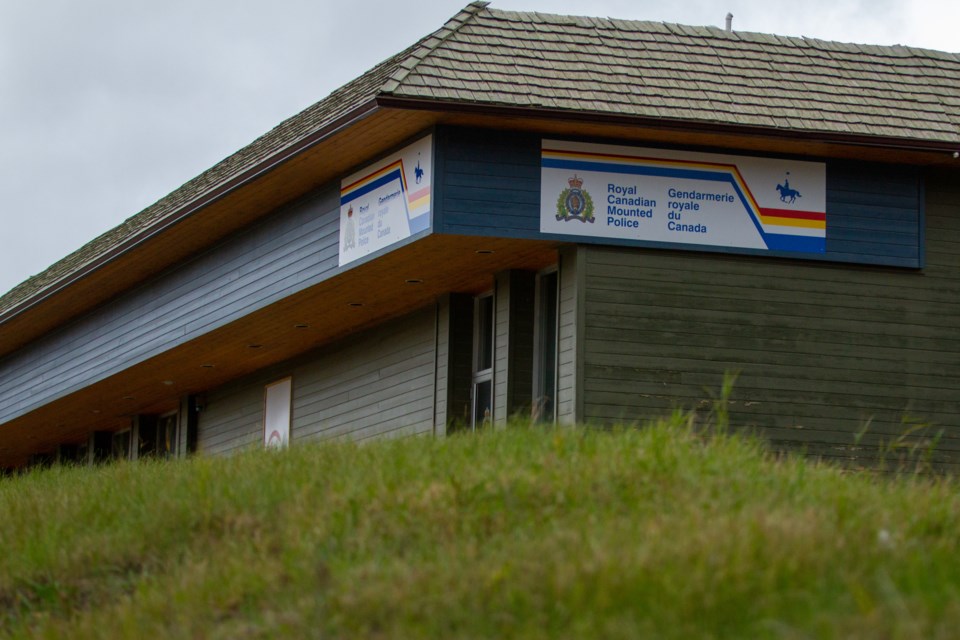ÎYÂRHE NAKODA – Is it a bird, is it a plane? No, it’s an RCMP drone.
Stoney Nakoda RCMP is launching a high-flying pilot program in Mînî Thnî June 4-15, using drones to get a bird’s eye view and swiftly respond to calls for service.
“Every community is unique in the layout and the calls for service, and Stoney Nakoda being a really large community that’s in the foothills, this project will provide us with a really unique lens on how we can best serve this area,” said Stoney Nakoda RCMP Staff Sgt. Chad Fournier.
During the trial period, drones will assist police in responding to crimes in progress, fleeing suspects, suspicious persons, missing persons, EMS and fire calls, and natural disasters.
Drones will be deployed from the Stoney Tribal Administration building parking lot in the Mînî Thnî townsite and piloted by trained RCMP members on site and from Cochrane and Edmonton.
Police will be testing three or four drones, each equipped with different technologies. Typically, they are equipped with an optical camera, but some also have thermal capability, loudspeakers, emergency red and blue lights, or sky hooks to carry emergency equipment like a cell phone or life jacket.
“Some of the drones have infrared capability, so we can detect a person’s body heat in a bush, for example, as opposed to just using the camera itself,” said Fournier. “That would be very helpful if we have a missing person or a missing hiker in this area, or even if someone is trying to evade police by running through the bush. We’d be able to find them much easier.”
Drone technology enables RCMP to handle investigations, critical incidents and public safety concerns more efficiently and innovatively. They can provide quicker response times and a bird’s eye view of crime scenes.
Drones can swiftly cover large areas, crucial for search and rescue missions in harsh conditions and can improve accuracy in locating and monitoring suspects, enabling officers to deploy proper resources. Timely, precise information also helps officers manage community safety and quickly clear risk areas.
RCMP already use drones to assist with traffic collision reconstruction, search and rescue, major crimes investigations and emergency response team calls.
The trial, also underway in Lac La Biche and Red Deer, explores new ways to use the technology to ensure public safety.
Fournier said RCMP involved representatives of the Goostoney, Chiniki and Bearspaw First Nations – which comprise Îyârhe (Stoney) Nakoda First Nation – in the planning and execution of the pilot program.
“We communicated with each of them and got the blessings of each chief before proceeding with trials and planning,” he said.
A one-week training session was also held in May, with 10 participants from the community also learning how to pilot and maintain the drones.
In a joint statement, leadership from the three Nations expressed anticipation working with RCMP to enhance police services to First Nations, while upholding privacy and culture.
“We hope this new technology will aid the RCMP in reducing the levels of drug trafficking, the crime and pain this brings to our Nation,” said the statement. “We look forward to receiving further briefings from the RCMP on the results of the trial and how this new capability will aid in providing increased safety and security to our people.”
To ensure privacy, RCMP have policies and procedures in place for drone use. A device may be used to help locate a missing or fleeing individual, however, would not be used for physical evidence searches on private property by police without a search warrant or other lawful authority.
Only trained and certified drone pilots will fly the devices to aid officers during calls for service.
Drone range depends on technology and the ability to have visual observers in place but should allow officers to fly within a range of two to four nautical miles radius, or 3.7 to 7.4 kilometres, from the area of deployment.
The technology, while limited, is still far less costly and more readily available to RCMP than helicopters and other fixed-wing aircraft more commonly used in larger urban centres.
“There’s only a capacity from the base station so far that the drones can actually fly, but there is a vision in the future to have drones in some of the trunks of police cars, so as RCMP members are responding to calls, they can pull over to the side of the road and fly the drone to the location to assist other responding members,” said Fournier.
RCMP will assess how drones can improve public safety and will inform the public of its findings after the trial is complete.
The Local Journalism Initiative is funded by the Government of Canada. The position covers Îyârhe (Stoney) Nakoda First Nation and Kananaskis Country.




